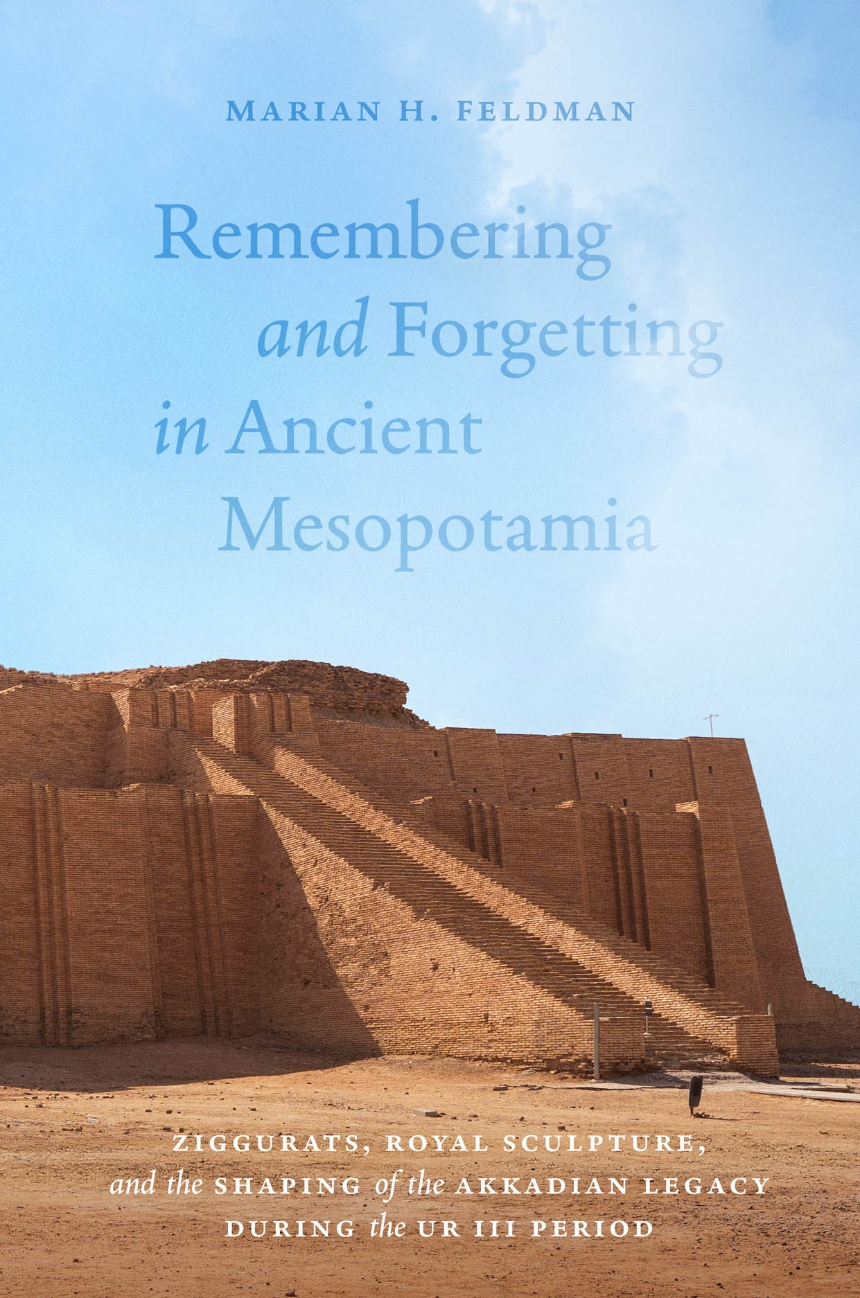Remembering and Forgetting in Ancient Mesopotamia
Ziggurats, Royal Sculpture, and the Shaping of the Akkadian Legacy During the Ur III Period
9780226842851
9780226842868
Remembering and Forgetting in Ancient Mesopotamia
Ziggurats, Royal Sculpture, and the Shaping of the Akkadian Legacy During the Ur III Period
A study of how our understanding of Akkadian history has been shaped by subsequent dynasties.
In this innovative new study of ancient Mesopotamian art and architecture, Marian H. Feldman examines the complex legacy of the Akkadian dynasty, which spanned ca. 2350-2150 BCE in the region now known as southern Iraq. The Akkadian state played an essential role in the formation and expression of subsequent political entities in the region, yet our understanding of this period is based primarily on the historical lens of their successors, in particular the rulers of the Third Dynasty of Ur (ca. 2100-1000 BCE). Focusing on four remaining ziggurats in Ur, Eridu, Uruk, and Nippur, as well as surviving statues and steles, Feldman examines how the Ur III rulers selectively curated and erased Akkadian structures and monuments to serve their own political ambitions. Analyzing the archaeological evidence of Ur III building practices and the display of Akkadian royal sculpture, she considers the role of sacred spaces in our knowledge of the period and imagines how the cultivation of the Akkadian narrative helped the Ur III dynasty centralize its power. In so doing, this book proposes a new way to understand the impact of the survival—or erasure—of architectural and artistic remains on collective and historical memory.
In this innovative new study of ancient Mesopotamian art and architecture, Marian H. Feldman examines the complex legacy of the Akkadian dynasty, which spanned ca. 2350-2150 BCE in the region now known as southern Iraq. The Akkadian state played an essential role in the formation and expression of subsequent political entities in the region, yet our understanding of this period is based primarily on the historical lens of their successors, in particular the rulers of the Third Dynasty of Ur (ca. 2100-1000 BCE). Focusing on four remaining ziggurats in Ur, Eridu, Uruk, and Nippur, as well as surviving statues and steles, Feldman examines how the Ur III rulers selectively curated and erased Akkadian structures and monuments to serve their own political ambitions. Analyzing the archaeological evidence of Ur III building practices and the display of Akkadian royal sculpture, she considers the role of sacred spaces in our knowledge of the period and imagines how the cultivation of the Akkadian narrative helped the Ur III dynasty centralize its power. In so doing, this book proposes a new way to understand the impact of the survival—or erasure—of architectural and artistic remains on collective and historical memory.
184 pages | 20 color plates, 22 halftones, 9 line drawings, 1 tables | 6 x 9
Architecture: Middle Eastern, African, and Asian Architecture
Art: Art--General Studies, Middle Eastern, African, and Asian Art
Reviews
Table of Contents
List of Illustrations
Author’s Note
1. Introduction
Memory, Representation, and Atmosphere
Parameters of the Study
Overview of the Book
2. The Memory of Space at the End of the Third Millennium BCE
Historical Overview
Material Manifestations of Late Third Millennium Southern Mesopotamia
Ur III Period Ziggurats
Akkadian State Temple Building in Southern Mesopotamia
The Case of Nippur
The Curse of Agade and the Power of Sacred Space
3. Digging Down: Foundations and the Erasure of History
Evidence of Earlier Building Under the Ur III Ziggurats at Uruk, Ur, and Eridu
Nippur
Foundations
Foundation Deposits
Conclusions
4. Changing a Feeling of Belonging: Architectural Atmospheres and Collective Memory
Architectural Atmospheres in Akkadian Sacred Spaces
Architectural Atmospheres in Ur III Sacred Spaces
Bodily Experiences of Architectural Spaces
The Curation of Monuments
Access and Audience at the Ur III Temple Complexes
Conclusions
5. Curating a Legacy: The Discursive Power of Akkadian Royal Sculpture
Akkadian “Naturalism”
The Materiality of Musculature
The Materiality of Fabric
Medium and Scale
Akkadian Royal Sculpture and a Charisma of Materiality
Conclusions
6. Conclusions
Acknowledgments
List of Abbreviations
Notes
Bibliography
Index
Author’s Note
1. Introduction
Memory, Representation, and Atmosphere
Parameters of the Study
Overview of the Book
2. The Memory of Space at the End of the Third Millennium BCE
Historical Overview
Material Manifestations of Late Third Millennium Southern Mesopotamia
Ur III Period Ziggurats
Akkadian State Temple Building in Southern Mesopotamia
The Case of Nippur
The Curse of Agade and the Power of Sacred Space
3. Digging Down: Foundations and the Erasure of History
Evidence of Earlier Building Under the Ur III Ziggurats at Uruk, Ur, and Eridu
Nippur
Foundations
Foundation Deposits
Conclusions
4. Changing a Feeling of Belonging: Architectural Atmospheres and Collective Memory
Architectural Atmospheres in Akkadian Sacred Spaces
Architectural Atmospheres in Ur III Sacred Spaces
Bodily Experiences of Architectural Spaces
The Curation of Monuments
Access and Audience at the Ur III Temple Complexes
Conclusions
5. Curating a Legacy: The Discursive Power of Akkadian Royal Sculpture
Akkadian “Naturalism”
The Materiality of Musculature
The Materiality of Fabric
Medium and Scale
Akkadian Royal Sculpture and a Charisma of Materiality
Conclusions
6. Conclusions
Acknowledgments
List of Abbreviations
Notes
Bibliography
Index
